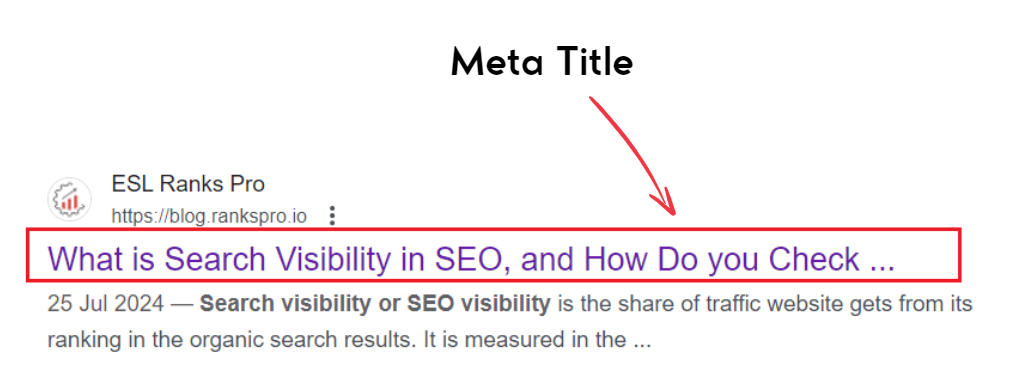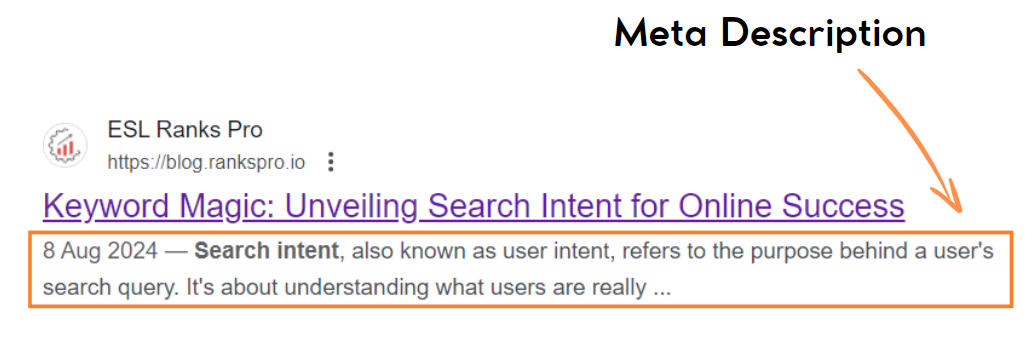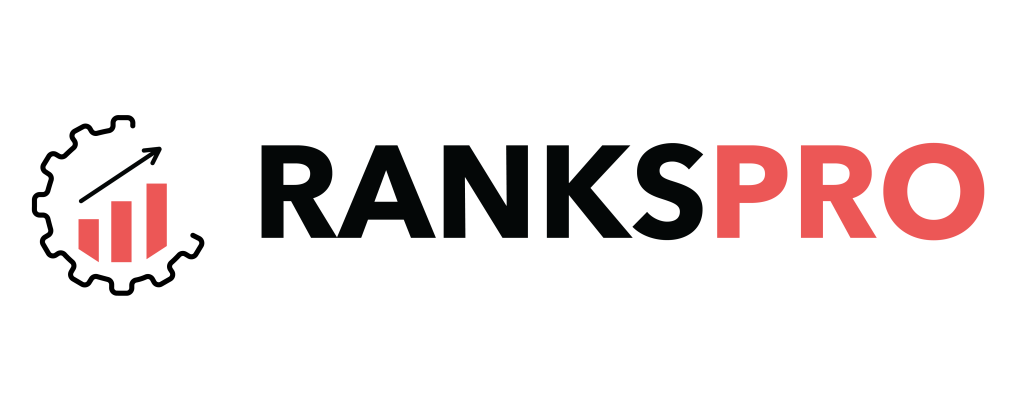Several factors make a website SEO-ready, and meta tags are one of them. These tags and metadata add value to content as well as optimize the technicalities of a website. Adding these elements or optimizing them will increase the chances of boosting search visibility and ranking on SERPs.
In this article, we will talk about understanding the role of meta tags for SEO and how marketers can leverage them in several ways.
Moreover, meta tags bring the opportunities to enhance the understanding of content for bots to crawl and index. So, let’s begin with the basics.
What are Meta Tags?
Meta tags are snippets of text embedded within the Hypertext Markup Language (HTML) of a webpage. These elements function as descriptive metadata, providing supplementary information about the content of the webpage.
While not directly visible to users browsing the website or a page, meta tags can be accessed and interpreted by search engines and web crawlers. Search engines, like Google, utilize the data gleaned from meta tags to gain a deeper understanding of a webpage’s content.
This metadata can influence search engine ranking algorithms, shape the display of page excerpts within search results, and in certain instances, be disregarded by search engines altogether.
Why Meta Tags are Important for SEO?
SEO) hinges on effective communication between websites and search engines. While humans readily grasp the nuances of written content, search engines rely on intricate algorithms to analyze the structured data embedded within a web page’s HTML code.
In this context, meta tags emerge as a critical tool for SEO success. Here are the top reasons why meta tags are important for SEO and other aspects.
- Enhanced Indexing
Meta tags play a pivotal role in facilitating a website’s successful indexation by search engines, particularly Google. For a website to appear in relevant search results, its pages must first be indexed by the search engine.
-1.png)
Meta tags serve as informative beacons, illuminating the content and context of a webpage, thereby guiding Google’s algorithms to categorize and rank the page appropriately within search results.
- Strategic Keyword Targeting
The judicious selection of keywords is a cornerstone of SEO strategy. Meta tags empower websites to achieve higher rankings for keywords that are germane to their content.
By incorporating these relevant keywords into meta tags, websites signal their thematic relevance to search engines, ultimately enhancing their visibility in search results compared to competitors.
- User Experience Optimization
Meta tags indirectly contribute to a positive user experience on a website. These elements function as organizational tools, providing users with valuable insights into the content of a webpage.
Well-crafted meta tags furnish users with descriptive details, enabling them to make informed decisions about whether a webpage aligns with their search intent.
Additionally, meta tags can bolster the readability of content by structuring the webpage, making it easier for users to navigate and comprehend the information presented.
In essence, meta tags act as a bridge between websites and search engines, fostering improved communication and ultimately propelling a website towards achieving its SEO goals.
Important Meta Tags for SEO
Here are the top meta tags for SEO that should be prioritized if you want to see desired results on top searches:
1. Meta Title or Title Tag
The meta title serves as the initial point of contact for your audience within search results. It functions as a crucial judgment factor, influencing user decisions about the relevance of your content. Optimizing this meta tag is paramount to attracting potential customers interested in your offerings.

While Google’s ranking algorithms comprehensively evaluate a web page’s entire content, the title tag retains a preeminent role as a vital interaction point for searchers. It acts as a captivating hook, enticing users to visit your website and thereby bolstering your click-through rate (CTR).
Integrating your most strategically selected keyword into the title tag is crucial for propelling your website toward higher rankings in relevant search results. A clear and concise meta title serves as a powerful asset for your business.
2. Meta Description
The meta description ranks as the second most significant meta tag for search engines. It materializes as the concise blurb displayed beneath your title tag within search results. This excerpt serves as a teaser, providing users with a glimpse into the content your webpage offers.

Analogous to the meta title, the meta description furnishes users with a preview of your page’s content. This specific section presents another golden opportunity to showcase clarity, descriptively utilize relevant keywords, and capture user interest.
The meta description stands as one of the most critical SEO meta tags, influencing user decisions to click on your listing and simultaneously aiding search engines in comprehending your webpage’s context for accurate ranking within relevant search results.
3. Meta Robots Tag
Meta robots tags function as directives that communicate with search engines regarding aspects such as whether external or internal links should be followed and pages indexed. A common application of meta robots tags involves addressing duplicate content concerns by ensuring that duplicate pages are not indexed.
Residing within a webpage’s HTML source code, the meta robots tag incorporates specific directives that illuminate its intended purpose. Here’s an illustrative example:
<meta name=”robots” content=”noindex,follow” />
A grasp of this tag and its effective utilization is instrumental to your SEO endeavors. Here’s a breakdown of the values you can leverage within this tag:
- Index: Instructs search engine bots to index the page.
- Noindex: Instructs search engine bots to refrain from indexing the page.
- Follow: Instructs search engine bots to crawl links present on the page and implies endorsement of those links.
- Nofollow: Instructs search engine bots to not crawl links on the page and signifies a lack of endorsement.
Employing the wrong attributes within the meta robots tag can have severe repercussions for your website’s visibility in search results.
4. Meta Tags for Headings
Heading tags (H1 through H6) establish a hierarchical structure for content organization on a webpage. When optimized with relevant keywords, they contribute positively to both SEO and user experience.
-1.png)
Similar to meta description tags, header tags provide users with a preview of the content within each specific section. For search engines like Google, they offer valuable insights into the organization, hierarchy, and thematic relevance of your content.
Optimized headings enhance user experience on your website. By facilitating a smooth reading and comprehension experience, you encourage users to remain on your page for extended periods. This user behavior translates to improved SEO ranking and expanded reach to potential leads.
5. Canonical Tag
Search engines are smart enough to recognize duplicate content, and it affects the overall SEO performance. When search engines encounter multiple web pages encompassing identical content, they might perceive it as an attempt to manipulate search rankings through content proliferation. This is where canonical tags come into play.
-1.png)
Optimizing your website and its web pages with canonical tags is essential for SEO. This meta tag plays a pivotal role in eliminating the creation of duplicate content. Canonical tags emphasize the designated URL, guiding search engine crawlers to the primary URL.
6. Social Media Meta Tags
While sharing your content across social media platforms, preserving a high-quality image, accurate title, succinct description, and correct URL is paramount. Social media meta tags empower you to exert control over how your webpage content is presented when shared on these platforms.
Here’s a closer look at seven prevalent Open Graph tags:
- og:title: This tag dictates the desired title intended for display when your webpage is linked.
- og:url: Here, you incorporate the URL of your webpage.
- og:description: Craft a concise description for your webpage; be mindful that Facebook typically displays around 300 characters.
- og:locale: Specify the language and region code associated with your content (e.g., en_US for English – United States).
- og:type: Describe the content type (e.g., article, video).
- og:site_name: Include your website’s name.
- og:image: Specify the URL of the image you desire to be displayed when your webpage is linked.
By optimizing these tags with relevant information, you can control the visual representation of your web page content on socials, increase click-through rates, and improve user experience. These tags are also integral for effective social media marketing.
7. Meta Tags for Alt text
Alt text, often overlooked, constitutes a valuable meta tag for search engines. It functions as an image optimization meta tag. This tag empowers you to furnish a description for your images, which is displayed in scenarios where the image fails to load or when users rely on screen readers.
-1.png)
By incorporating alt text, you render images accessible to both users and search engines. Given that Google cannot decipher the content of images, alt text assumes paramount importance.
It furnishes Google with the necessary contextual understanding to accurately rank your webpage and the image itself.
8. Viewport Meta Tag
In the era of Google’s mobile-first indexing prioritization, a website’s responsiveness on mobile devices exerts a significant influence on SEO ranking. Viewport meta tags emerge as a vital tool in this context.
This meta tag dictates how a webpage scales and adapts for optimal display across a spectrum of devices. By defining attributes such as the width and initial scale of your webpage, you cultivate a responsive design that seamlessly adjusts to varying screen sizes.
This translates to a superior user experience, ultimately propelling your website towards a higher ranking within SERPs.
9. Meta Refresh Tag
The meta refresh tag empowers you to instruct a web browser to automatically refresh a webpage after a predetermined time interval. This element can also be leveraged as a rudimentary redirection tool, directing the browser to navigate to a different URL upon elapsing the specified timeframe.
However, from an SEO perspective, it’s strongly recommended to opt for a 301 redirect instead of the HTML meta tags refresh. This stems from the fact that webpages necessitate parsing before they can identify the destination URL, and this process can be time-consuming.
Conversely, search engines process 301 redirects considerably faster and guarantee the transfer of as much link authority as possible. Additionally, 301 redirects translate to a more positive user experience due to the swift loading of the redirection target.
10. Meta Charset
The meta charset tag establishes the character encoding scheme for a webpage. In essence, it communicates to the web browser how the text on your webpage ought to be displayed.
The web abounds with hundreds of character sets; however, the two most commonly encountered are:
- UTF-8: Character encoding for Unicode
- ISO-8859-1: Character encoding for the Latin alphabet
Improper character formatting can severely hinder user experience and render your web pages visually unappealing. Employing the wrong character encoding can lead to the garbled display of certain characters within the browser.
Tips to Utilize Meta Tags for SEO
1- Optimize Meta Titles for Better Results
The cornerstone of effective meta titles lies in their uniqueness. Each webpage should boast a distinct title that precisely reflects its content. While brevity is essential, ensure the title retains informative value.
Make sure you avoid vague and generic labels that fail to capture user attention. Title case or sentence case are both acceptable for capitalization, but consistency is key.
Craft titles that entice users to click, but steer clear of deceptive clickbait tactics. Aligning your title with the user’s search intent is crucial, as it signals relevance to search engines.
When relevant, incorporate your target keyword seamlessly into the title. Remember, character count plays a vital role in optimal display; keep your titles under 60 characters.
2- Keep Meta Descriptions Precise
Just like titles, each webpage deserves a unique meta description. This description serves as a succinct summary of your content, so strive for accuracy and clarity. Shun generic descriptions that fail to pique user interest.
Craft descriptions that are both informative and engaging, utilizing sentence cases for a readable flow. Similar to titles, avoid clickbait strategies; instead, focus on generating descriptions that genuinely entice users to click.
Ensure your description aligns with the user’s search intent, and where appropriate, incorporate your target keyword naturally. Remember to restrict your meta description to under 160 characters for optimal display.
3- Implement Schema Markups
Schema markup emerges as a game-changer, offering a specialized technique for structuring the data on each of your web pages in a format readily understood by search engines. This implementation presents a win-win scenario for both search engines and users.
-1.png)
Implementing a structured schema markup can:
- Enhance user experience
- Increase the SEO value of the website
- Enable search engines to understand content
- Feature content on SERP elements like rich snippets
Implementing relevant structured data on your web pages is often a prerequisite for attracting organic traffic and achieving high search engine rankings.
4- Utilize Headings Appropriately
Maintaining a close association between your headings and the corresponding text sections they describe is crucial. While headings might not directly influence ranking, search engines do take them into account.
Ensure your headings accurately convey the core sentiment of the text block they precede, avoiding generic headings like Step 1, 2… or Phase 1, 2… and so on. Don’t overuse heading tags or keywords within them, as this can hinder readability. Prioritize creating a user-friendly reading experience.
5- Optimize Meta Tags with Keywords
The keyword meta tag, while no longer a dominant ranking factor, can still hold some value. It’s important to distinguish this tag from the “focus keyword” setting found in popular SEO plugins like Yoast SEO.
The focus keyword setting functions primarily as a content analysis tool, offering suggestions for optimizing your content around your target keyword. When incorporating keywords into meta tags, prioritize the most important ones.
Ensure keywords flow naturally within the meta tags, avoiding blatant keyword-stuffing tactics. Remember, you’re primarily writing titles and descriptions for human visitors. Prioritize clarity and user experience over keyword density.
Identify Pages to Implement Meta Tags with RanksPro
Meta tags serve as the invisible cornerstones of effective SEO. By strategically crafting compelling titles, and concise descriptions, and leveraging schema markup, you empower search engines to comprehend your website’s content and effectively categorize it within search results.
Additionally, optimizing headings and strategically incorporating keywords further enhances the findability of your web pages. Remember, user experience is paramount. Craft clear and informative meta tags that entice users to click, not deceptive clickbait.
While crafting effective meta tags is essential, identifying missing or poorly optimized tags can be a daunting task. Here’s where RanksPro, your all-in-one SEO toolbox, shines. RanksPro empowers you to:
- Effortlessly Audit Your Website: Conduct a comprehensive SEO audit to identify missing or poorly optimized meta tags across your web pages.
- Actionable Recommendations: RanksPro provides actionable recommendations for optimizing your meta tags, ensuring they effectively communicate the value your website offers.
- Seamless Integration: Streamline your SEO workflow by managing all your meta tag optimization tasks within a single platform.
- Go Beyond Meta Tags: RanksPro equips you with a comprehensive suite of SEO tools to optimize all aspects of your website, propelling it towards the top of search engine rankings.
Take control of your website’s SEO destiny. Sign up for RanksPro today and unlock the power of expertly crafted meta tags!



